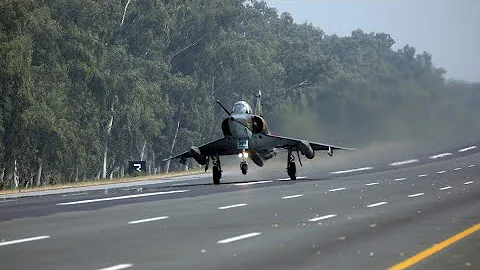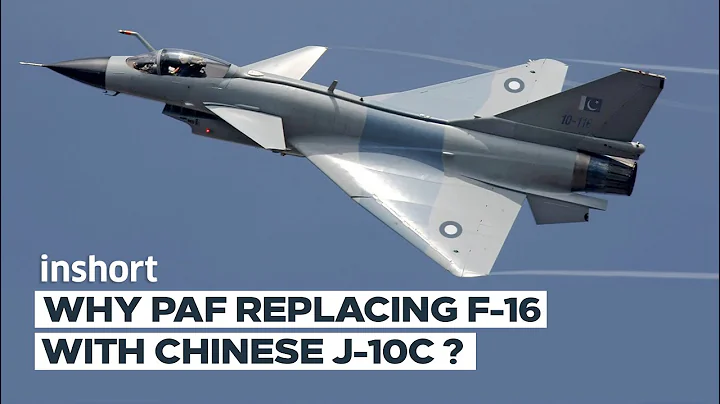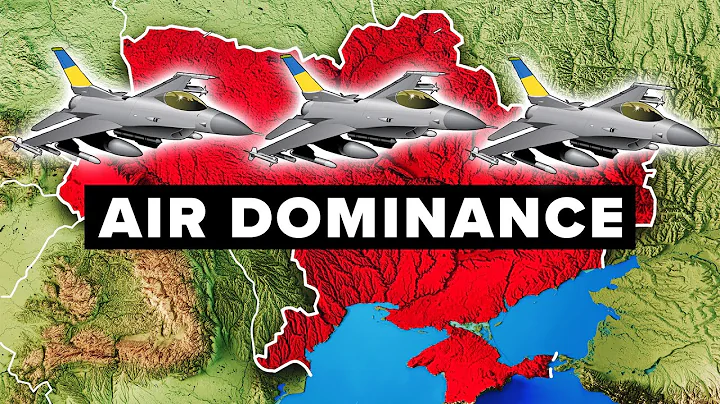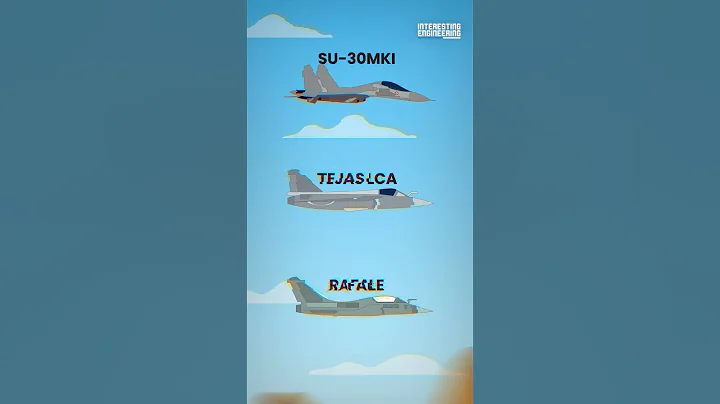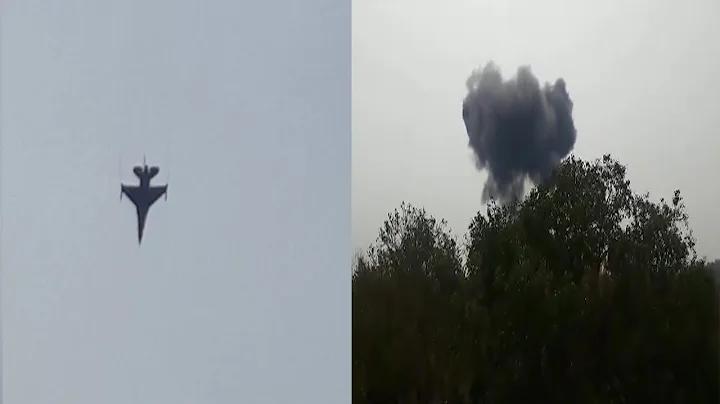has excellent performance and brilliant results! It is also the focus of trouble! Now we already know that the Xiaolong has become the main force of the Pakistan Air Force. This year, the J-10 has also been officially included in the Pakistan Railway . However, those F-16s that have never been obtained will become Pakistan’s chest forever. Hurt.

This article was originally published in the February 2004 issue of "Weapons" magazine and was written by Yang Daheng. In this reprint, the content has been re-improved and edited, and some illustrations have been added and organized to share with fellow readers. Personally, I think "Weapons" magazine is a professional and objective military magazine. I recommend continued subscription to enrich your own military knowledge. Reprinting some of the older articles on it is mainly to allow readers to examine past things and opinions from another unique perspective.
In June 2003, Pakistani Prime Minister Musharraf visited the United States. Although this is a routine diplomatic visit, it has brought up an old historical issue - the transaction of F-16 fighter jets between the United States and Pakistan. What happened to the F-16 between Pakistan and the United States, two countries with delicate relations?
Honeymoon Crystal
The Soviet Union's invasion of Afghanistan in late December 1979 shocked the world, and even more shocked the United States. The old wound of the United States losing its traditional Central Asian ally Iran has not healed, and Afghanistan has added new pain. Without Afghanistan as a natural barrier, Pakistan overnight became the forefront of the cold war . Although Pakistani intelligence analysis showed that the Soviet army was unlikely to directly invade Pakistan in the first year of the invasion of Afghanistan, this threat began to hang over Pakistan's head from then on. After all, Afghanistan is just a springboard for the Soviet Union to drink horses Indian Ocean . To get a warm water port, it will eventually have to go through Pakistan. As a result, the pressure of reality quickly narrowed the distance between the United States and Pakistan.
Pakistan’s analysis is correct. In the first year after the invasion of Afghanistan, the Soviet army was mainly busy establishing strongholds and establishing ruling order in the occupied areas. In terms of the air force, the Soviet Air Force, whose headquarters is located in Temeiz, Turkmenistan, has 4 aviation regiments (all equipped with MiG-23 fighters and Mi-24 helicopters), but they were all ordered to " It is strictly prohibited to fly within 15 kilometers from the Pakistan border."

Soviet MiG-23 fighter jet

However, as the resistance movement in Afghanistan grew day by day, the Soviet Union began to take care of Pakistan, which secretly supported the resistance movement. Starting in 1981, fighter planes of the 4th Soviet Air Force began patrolling along the Pakistan-Afghanistan border, and from time to time penetrated deep into Pakistan, and even bombed Afghan refugee camps in Pakistan.
Faced with the Soviet MiG-23 fighter jets, the Pakistan Air Force's "Mirage"-Ⅲ and J-6 fighter jets seemed unable to do what they wanted, and they immediately proposed to the United States to purchase new fighter jets . At first, the United States planned to provide F-5E "Tiger" fighter jets with low technical content. After being rejected by Pakistan, it finally agreed to provide the latest front-line fighter jet-F-16 "Fighting Falcon".


Chinese J-6 fighter jets equipped by Pakistan
"Peace Gate"
In December 1981, the governments of Pakistan and the United States signed an agreement to purchase 40 F-16A/B (28 F-16A and 12 F-16B) fighter jets. This arms purchase plan is called the "Peace Gate" plan by the Pentagon. This batch of fighters are all the ultimate development model of F-16A/B - the 15th batch standard. They are equipped with Pratt & Whitney F100-PW-200 engines and equipped with AN/APG-66 airborne radar. Carrying AIM-9 Sidewinder air-to-air missiles.
In October 1982, the first batch of F-16s were flown across the Atlantic by American pilots. The aircraft was handed over to the Pakistani pilots in Dhahran, Saudi Arabia, who then flew them back home. All 40 aircraft were delivered in 1987 and equipped with the 9th, 11th and 14th Squadrons of the Pakistan Air Force. After the air and ground crews of the 11th Squadron received training at the 421st Training Wing at Hill Air Force Base in Utah, USA, they returned to China to train the personnel of the 9th and 14th Squadrons.

The first F-16B two-seat fighter jet delivered to Pakistan under the "Peace Gate" 1 program of the United States and Pakistan, numbered "601".
After acquiring the coveted first batch of 40 F-16s, the Pakistan Air Force hopes to add icing on the cake. In 1988, with the war in Afghanistan still ongoing, the United States and Pakistan signed the "Gateway of Peace" plan, which ordered 11 F-16A/B batch 15 OCUs (combat capability upgraded models), including 6 Type A and 5 Type B. In 1989, Pakistan ordered an additional 60 aircraft of the same type, called the "Peace Gate" 3 project, with a total value of US$1.4 billion and a unit price of US$23 million.

F-16A/B batch 15 OCU model is equipped with a more reliable F100-PW-220 engine. The structure is reinforced and can launch the AIM-120 "Advanced Medium-range Air-to-Air Missile". It also adds an radar altimeter. , wide field of view head-up display , AN/APX-101 friend or foe identification device, AN/ALE-40 chaff/decoy launcher, AN/ALQ-131 electronic warfare pod and other airborne equipment, and improved airborne equipment Computer performance, maximum empty weight increased to 17010 kg.
In order to obtain these aircraft as soon as possible, Pakistan paid the entire cost of the "Peace Gate 2" plan in one lump sum in 1988. When the "Peace Gate" 3 plan was signed in 1989, it also made a down payment for the first batch of 17 aircraft. . In this way, by 1989 Pakistan had paid a total of US$685 million to the United States.

Stars and Moon Arrows
With the arrival of the F-16, the Pakistan Air Force has greatly changed its passive situation, and the Soviet Air Force and the Afghan Air Force have begun to have a difficult time. Pakistan is the second country to put F-16 into actual combat (the first country is Israel). From 1985 to 1988, the Pakistan Air Force shot down at least 8 aircraft that invaded its airspace, of which the 9th Squadron shot down 3 (2 Su-22, 1 An-26), and the 14th Squadron shot down 5 (Su-22 and MiG-23, 2 each, and 1 Su-25). Most of these aircraft were shot down by F-16 AIM-9 "Sidewinder" missiles, and a few were shot down by F-16 aircraft cannons. One F-16 of the Pakistan Air Force was lost in the battle. It was later found that it was shot down by a "Sidewinder" launched by its own side. Fortunately, the pilot successfully escaped.

After the war in Afghanistan, the Pakistan Air Force lost another 7 F-16s due to various reasons, mostly due to mechanical failures. In order to make up for the losses, the Pakistan Air Force purchased F-7 fighter jets, and the 14th Squadron originally equipped with F-16s was all equipped with F-7s. Interestingly, the F-7s of the Pakistan Air Force adopt exactly the same painting as the F-16s, which seems to indicate some expectations of Pakistan.

The end of the song
Thirty years in Hedong, Thirty years in Hexi . The honeymoon period between the United States and Pakistan was largely sustained by the war in Afghanistan. After the war in Afghanistan ended in 1989, the contradictions between the United States and Pakistan began to emerge. The core of which was Pakistan's insistence on launching a nuclear competition with India.
In 1990, the United States announced an arms embargo against Pakistan. F-16s were the first to be affected and all deliveries were stopped. The reasons for the embargo are: Pakistan secretly developed nuclear weapons and conducted a considerable scale of nuclear tests; the F-16s of the 9th and 11th Squadrons of the Pakistan Air Force were modified into nuclear bomb delivery tools; Pakistan refused to join the "Nuclear Non-Proliferation Treaty" .

Overview of the "Peace Gate" plans of Brazil and the United States
At this time, the 11 aircraft of the "Peace Gate" 2 plan and the first batch of 17 aircraft of the "Peace Gate" 3 plan have been completed, but the United States will Sent to the Air Force Aircraft Maintenance and Upgrade Center (AMARC) at Davis-Monsey Air Force Base in the Arizona desert for storage. To this day, these aircraft are still stored at AMARC, but they are well maintained and the engines are run every 45 days.


Faced with the embargo, Pakistan believes that Pakistan has paid the United States for 28 F-16s. If it does not get the aircraft, the United States should refund at least $685 million. But for the United States, if the money is refunded, the recovered aircraft will be worthless and will need to continue to spend money on maintenance. For this reason, the two sides reached a deadlock.
In fact, not only have these F-16s been well maintained, but their performance is also relatively advanced among the F-16A/B models. Selling them to a third country may be a way to resolve the dispute. In March 1996, the United States and Indonesian signed an agreement to sell 9 F-16s in AMARC inventory to the Indonesian Air Force. However, in June 1997, Indonesia canceled the order with excuses.The United States and Pakistan were overjoyed. In the same year, US President Clinton assured Pakistani Prime Minister Benazir Bhutto that he would refund Pakistan's purchase price and step up efforts to find a third-party buyer. It was rumored that Taiwan was interested in purchasing these aircraft, but in the end nothing happened. Even Philippines and Bosnia and Herzegovina, which have obviously insufficient financial resources, were once rumored buyers. By the end of 1997, the possibility of a third-party buyer was becoming less and less likely.

Pakistani Air Force ground crews are cleaning and maintaining the cockpit cover of the F-16 fighter jet.
In May 1998, the F-16 deadlock turned for the better. The United States is concerned about the escalation of the conflict between India and Pakistan as India conducts a series of nuclear tests near the border with Pakistan. In order to prevent Pakistan from taking more tough response measures, the United States plans to return these F-16s to Pakistan as compensation. But in the end, opposition forces within the U.S. government gained the upper hand, and the plan failed. As a result, Pakistan responded with a larger-scale nuclear test.
In 1998, the New Zealand government planned to lease these F-16s for a period of 10 years, but this has not been possible so far. In the same year, the United States officially announced that it would sell some of its inventory of F-16 accessories to third countries in exchange for funds to compensate Pakistan, but this process is obviously very long. At the end of 1998, the US government announced a new repayment plan: 140 million of the US$685 million in arrears would be repaid by the US in goods, and the remainder in cash. The $140 million in goods includes $80 million worth of U.S. flour, with another $60 million negotiated by both parties. At this point, the problem of repaying the money finally came to an end, but several years of delays not only deprived the Pakistan Air Force of advanced equipment, but also deprived it of much-needed funds.

The Pakistan Air Force has been equipped with advanced F-16 flight simulators to reduce the loss of flight training on the life of the aircraft.
A little comfort
At present, the Pakistan Air Force has a total of 32 F-16s, equipped with the 9th and 11th Squadrons. Although the United States has imposed military sanctions on Pakistan, it does not involve the F-16s that have been delivered. Therefore, the F-16s of the Pakistan Air Force have received maintenance and upgrade services provided by American manufacturers. Since the late 1980s, the F-16s of the Pakistan Air Force have been upgraded to the 15th batch of F-16A/B models.

The main improvements of the 15th batch of F-16A/B include upgrading the original AN/APG-66 radar to AN/APG-66 (V2), adding functions, and increasing the average effective detection range by 25%. The maximum search distance for plane scanning reaches 95 kilometers, the maximum search distance for overlooking reaches 70 kilometers, and the maximum search distance for ground targets increases to 185 kilometers. After the radar improvement, the 15th batch of F-16A/B models have the ability to launch the AIM-120 "Advanced Medium-Range Air-to-Air Missile".

Pakistan Air Force F-16A fighter jets are dropping Mk-82 aerial bombs
However, due to the arms embargo, the Pakistan Air Force has not obtained this type of missile. When performing interception missions, this type of aircraft carries two AIM-9L "Sidewinder" air-to-air missiles under its wings, and two AIM-9P "Sidewinder" air-to-air missiles on its wingtips. In addition, the Pakistan Air Force has also equipped it with "Pavement" laser-guided bombs and French "Magic" 2 air-to-air missiles. After this upgrade, the overall performance of the 15th batch of F-16A/B models is close to the F-16 MLU (mid-term improved version) of NATO countries.

Pakistan Air Force ground crews are attaching "pavement" laser-guided bombs to F-16A fighter jets
Behind the scenes story
After the "9·11" incident, the United States received active cooperation from Pakistan in the war on terrorism in Afghanistan, and encircled and suppressed Hundreds of "Al Qaeda" elements and members of the Taliban. Relations between the United States and Pakistan are heating up rapidly. At the same time, due to nearly 10 years of US sanctions, Pakistan's gap with India in the conventional arms race is getting wider and wider. Under such circumstances, it should be a matter of course for the United States to deliver F-16s to Pakistan. However, at least for now, the United States and Pakistan have not reached any agreement on the F-16. This may be related to the pressure from India, Pakistan's main rival, because the United States is also building a long-term strategic partnership with India. It seems that these F-16s in the western desert of the United States may become an eternal pain on Pakistan's chest.



